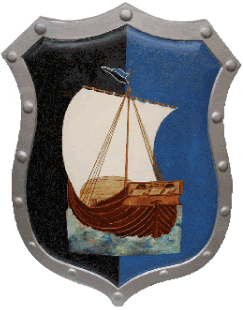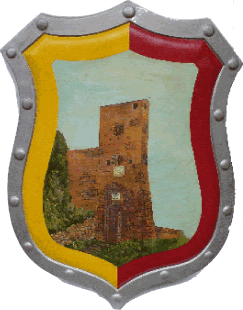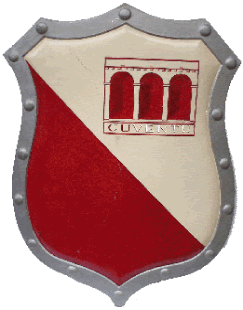 |
 |
 |
 |
 |
 |
 |
||
| ENTE AGOSTO MEDIEVALE | AURIVEU | BURGU | CAMPU | CIASSA | CUVENTU | MARINA | ||
| rievocazioni | albo d'oro |
|
SESTIERE CAMPU (CAMPO) A.D. 2008
Capitano Reggente: Marco Calipa
|
|
|
Liberatosi dalla servitù del Re di Francia Luigi XII°, il governo di Genova, retto dal Doge Ottaviano FREGOSO, si convinse a cedere l’amministrazione della città di Ventimiglia al Banco di San Giorgio. Tale decisione era motivata, oltre che da ragioni economiche (la Repubblica di Genova aveva già ceduto al Banco di San Giorgio la Corsica nel 1453, Sarzana nel 1488 e Pieve di Teco nel 1512) anche dal fatto che la nostra città, per la sua posizione di “frontera”, era considerata una “porta” di vitale importanza del dominio genovese. Il 20 febbraio 1514, dopo qualche settimana di trattative con l’ambasceria ventimigliese, il Doge, nella sede del Palazzo Ducale, con l’intervento del Consiglio degli Anziani, di quattro Procuratori e del Notaio-Cancelliere Gerolamo LOGIA, dava esecuzione all’atto del governo che sanciva modalità, tempi e condizioni della cessione della sovranità della città di Ventimiglia al Banco di San Giorgio.
LA SÉRÉNISSIME RÉPUBLIQUE DE GÊNES La République de Gênes, gouvernée par le Doge Ottaviano Fregoso, n’étant plus soumise au roi de France, Louis XII, décidait de céder l’administration de la ville de Vintimille au Banco di San Giorgio. Motif de cette décision, non seulement les raisons économiques (la République de Gênes avait déjà cédé au Banco di San Giorgio: la Corse en 1453, Sarzana en 1488 et Pieve di Teco en 1512), mais surtout le fait que Vintimille, ville de frontière, était considérée une «porte» de vitale importance du domaine de Gênes. Le 20 février 1514, après quelques semaines de négociations avec les ambassadeurs de Vintimille, le Doge, dans sa résidence du Palais Ducal, à la présence du Conseil des Anciens, de quatre Procureurs et du Notaire-Chancelier Gerolamo LOGIA, ratifiait les modalités, les temps et les conditions pour céder la souveraineté de la ville de Vintimille au Banco di San Giorgio.
DIE HOHEIT DER REPUBLIK VON GENUA Nachdem die Stadtverwaltung von Genua, angeführt vom Dogen Ottaviano FREGOSO, von der Dienstbarkeit dos französischen Konigs Louis XII befreit wurde, überzeugte sich die Verwaltung der Stadt Ventimiglia die Banco di San Giorgio abzutreten. Diese Entscheidung war nicht nur durch Wìrtschaftsgrunde begründet (die Republik von Genua hatte der Banco di San Giorgio Korsika im jahre 1453, Sarzana 1488 und Pieve di Teco 1512 schon abgetreten) sondern weil unsere Stadt, wegen ihrer Lage an der Grenze, eine lebenswichtige Tür der genuesischen Herrschaft darstellte. Am 20 februar 1514, nach einigen Verhandlungswochen mit der ventimigliesischen Botschaft, übergab der Doge im Herzogspalast mit der Beteiligung des Altersrats, der vier Prokuristen und des Notars-Kanzlers Gerolamo LOGIA, dem Regierungsakt, welcher Art, Zeiten und Bedingungen der Übertragung der Herrschaftvon Ventimiglia zur Banco di San Giorgio festsetzte, volle Ausfuhrung.
THE SERENISSIMA REPUBBLIC OF GENOA Freed from the subjection to Louis XII, King of France, the government of Genoa, under the supervision of the Doge, Ottaviano FREGOSO, was convinced to hand over the administration of the town of Ventimiglia to the Banco di San Giorgio. This decision was motivated, not only by economic reasons (the Republic of Genoa had already handed over to the Banco di San Giorgio the Corsica in 1453, Sarzana in 1488 and Pieve di Teco in 1512) but also by the fact that the town, for its position, was considered a gateway of vital importance of the Genovese dominion. On the 20th february 1514, after several weeks of negotiations with the Ventimiglia Embassy, the Doge, on the seat of the Ducal Palace, with the intervention of the Council of the Elders, four Procurators and the Notary Chancellor Gerolamo LOGIA, the government’s deed which sanctioned formalities, times and conditions of the handing over of the town of Ventimiglia to the Banco di San Giorgio was thus made legal. |
|